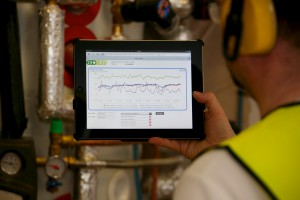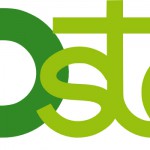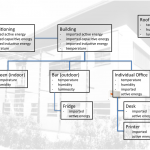
 The technology industry’s latest trend, the Internet of Things (IoT), might on the face of it appear as a daunting leap in the dark or as an overhyped consumer fad. Many examples of its use often look good on presentation slides or sound like the sort of thing dreamed up by overactive imaginations in Silicon Valley, but there are straightforward and pragmatic applications arising out of IoT.
The technology industry’s latest trend, the Internet of Things (IoT), might on the face of it appear as a daunting leap in the dark or as an overhyped consumer fad. Many examples of its use often look good on presentation slides or sound like the sort of thing dreamed up by overactive imaginations in Silicon Valley, but there are straightforward and pragmatic applications arising out of IoT.
One area of immediate interest is monitoring and measurement, especially of critical, expensive or remote resources, such as energy. This of course is not new, but recent advances are making it possible to extend energy monitoring and measurement in ways that have not been either possible in the past.
The consumer adoption of many technologies has driven down prices and shifted even industrial products towards simpler, sometimes stylish and generally more easily and readily replaceable design. For monitoring, measurement and data collection this means much broader availability of a huge range of lower cost sensing devices.
In addition, widespread connectivity through the availability of high capacity fibre networks and increasingly data capable wireless networks means that connecting sensors for monitoring precious resources at almost any remote site becomes technically achievable.
Many things are technically possible, but are they worthwhile and commercially viable, and would that include public as well as private sector applications?
The collection of accurate information from a variety of sources in order to make real-time decisions – a pragmatic definition of big data – could be not only interesting, but of real benefit. According to public sector responses in the research covered in the Hitachi Data Systems’2014 Information Innovation Index study, the biggest benefits from big data would be real time access to information, leading to better planning and opportunities to save cost. Three quarters of those surveyed thought the main drivers for public sector investment in big data were to support the overall organisation’s strategy, with almost two thirds acknowledging the requirement to comply with legislation and regulation. These drivers were much higher in public sector than in other industries.
Getting to grips with monitoring overall energy usage fits directly into two of those areas of immediate need – saving costs and compliance with legislation.
Existing approaches tend to be a little patchy. Some organisations will collect data from their supply meters, but often only periodically and in any event the meter gives no insight into details or specific usage within different parts of the organisation or power hungry applications. Neither does the data contain other intelligence that might explain peaks and troughs, which might be gleaned from occupancy data or environmental sensors capturing temperature and humidity.
Where smarter meters are in place, the solutions are often supplied with their own proprietary software, meaning that different sources of data are much harder to combine, especially in anything approaching real time. Across any organisation there will be multiple locations and a legacy of existing systems in place, many different.
So there is still a significant challenge. With a diversity of systems, meters and various sensor manufacturers, how can an organisation ensure that they can gather data from all the sites they need to monitor in order to have a complete picture of energy usage? Fortunately there are solutions at hand, but costs can escalate rapidly as more monitoring points are added.
For these reasons, EcoSteer, an energy and environmental monitoring software start-up based in the UK, has taken a different approach. Its platform is open, with a logical data model configurable to directly match organisational structures and business requirements, and a web user interface. It is sensor agnostic, to accommodate any type and manufacturer of device, and designed with a distributed cloud-aware architecture, to scale to huge numbers of sensors from large numbers of sites.
These technical arrangements are useful and important to deliver an enterprise grade service, but commercially the EcoSteer pricing model is far closer to a consumer model, meaning that it is highly cost effective to start with only a couple of sensors on a single site, and scale up without changing the underlying software or losing any data already gathered.
With recent advances in sensor and networking technology, now is the right time to invest in gathering more intelligence about energy usage. EcoSteer makes it possible to start early at low cost, learn, and grow to massive scale. Its recent news of a partnership with HP, where HP will embed and resell the EcoSteer platform in HP’s energy efficiency management solution for telecoms and utilities, demonstrates that the EcoSteer monitoring solution is anticipated to deliver both big data and smaller costs. Just as other industries expect to benefit from this, so too should organisations in the public sector, and they can start by taking small pragmatic steps, not a leap of faith into the dark.






Recent Comments